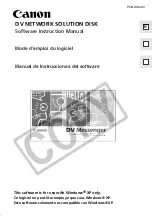
Examples
•
To restore file partitions on the backup tape whose primary partitions reside on the volume
$GEN:
1> RESTORE $TAPE, *.*.*, PARTOF $GEN
•
To restore all file partitions on the volume $DATA:
1> RESTORE $TAPE2, $DATA.*.*, PARTOF *
PARTONLY
The PARTONLY option specifies if all of the partitions of a partitioned file (or table) are to be
restored. This option applies to Enscribe and SQL files.
PARTONLY [ ON | OFF | PARTIAL ]
ON
specifies that only the partitions of a file explicitly named in
restore-files
are restored.
ON is the default if you specify the PARTONLY option in the RESTORE command.
If the PARTONLY option was ON when the file was backed up, the PARTONLY ON option is
automatically applied to the restore.
OFF
specifies that if the primary partition is specified in
restore-files
, then both the primary
and secondary partitions are restored. OFF is the same as omitting the PARTONLY option from
the RESTORE command.
With the PARTONLY OFF option, if a secondary partition is named in
restore-files
and
the primary is not, the secondary partition is not restored.
PARTIAL
specifies that RESTORE function identically to PARTONLY ON until the verification phase.
PARTONLY PARTIAL then skips the partition online operation, index linking, and SQL/MP
object verification steps performed by PARTONLY ON.
For Enscribe files, PARTONLY PARTIAL is equivalent to PARTONLY ON.
Use this option when you have additional partitions to recover in subsequent RESTORE
operations. All logically related SQL/MP objects are left offline in a non-functional state at the
end of this RESTORE session. To successfully place table and index partitions online, link all
indexes, and perform verification, you must perform a final RESTORE PARTONLY ON session.
If the BACKUP tape contains partitioned or multiple indexes for a single table, HP strongly
recommends that you perform the final PARTONLY ON operation specifying the primary
partitions of the table and index.
PARTIAL prevents RESTORE from attempting time consuming I/O to all other partitions that
cannot succeed until all partitions are present. It reduces the error and warning messages
generated by missing partitions (some messages remain due to unsuccessful timestamp and
drop operations).
After the RESTORE operations, use the FILEINFO
table-name
, DETAIL command on the
primary and secondary partitions to verify that the index values in all file labels point to the
primary partition of the index.
PARTONLY PARTIAL removes many resource conflicts that prevented concurrent RESTORE
operations involving multiple partitions of the same object. The only remaining resource conflict
involves multiple SQLCAT processes trying to access the same catalog files. Internal retry
attempts cannot handle a large number of SQLCAT processes (this number is limited only by
the number of tape drives available for RESTORE processes). To eliminate these conflicts, you
can register partitions in multiple catalogs so that each parallel RESTORE PARTONLY PARTIAL
RESTORE Options
147
















































